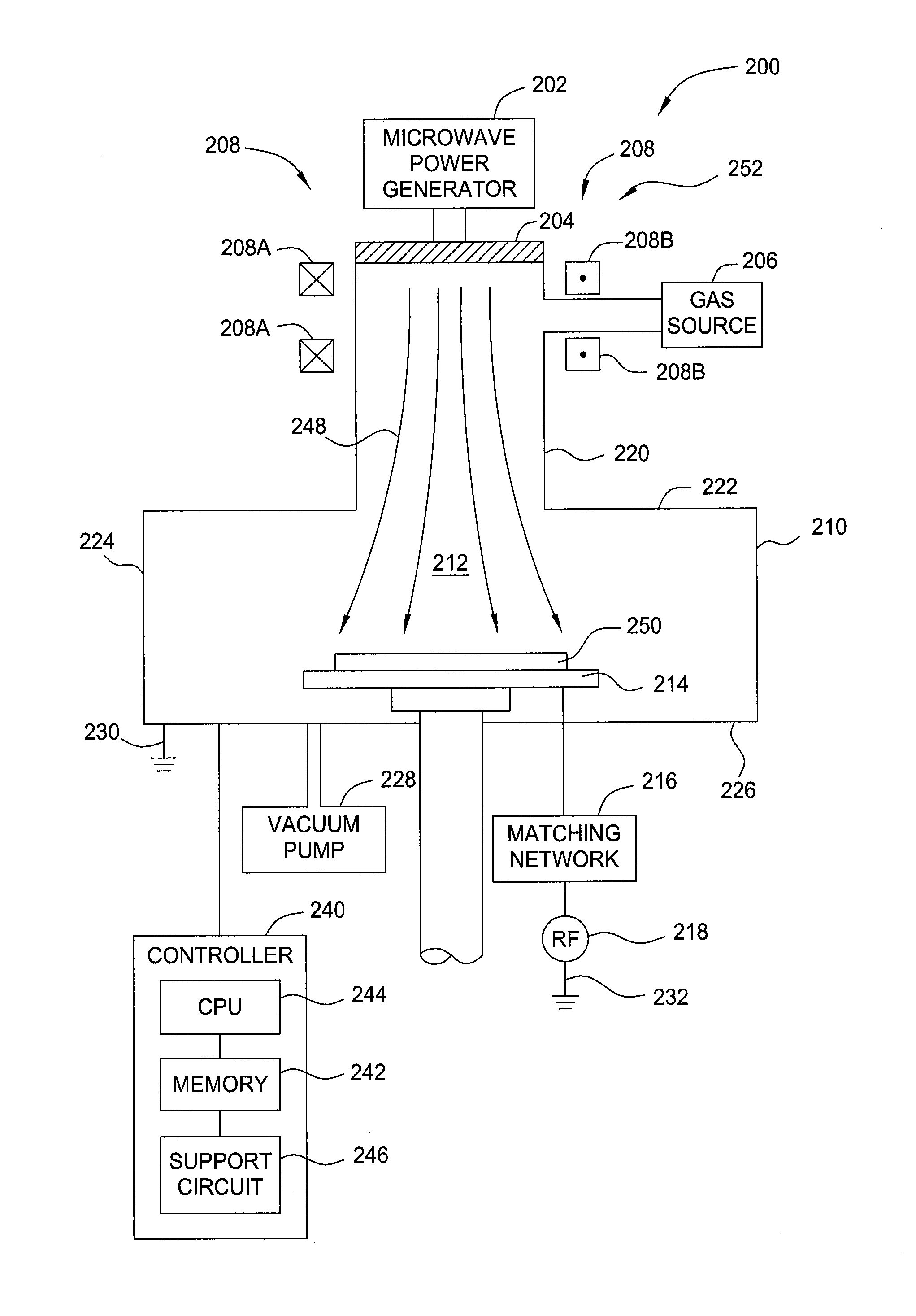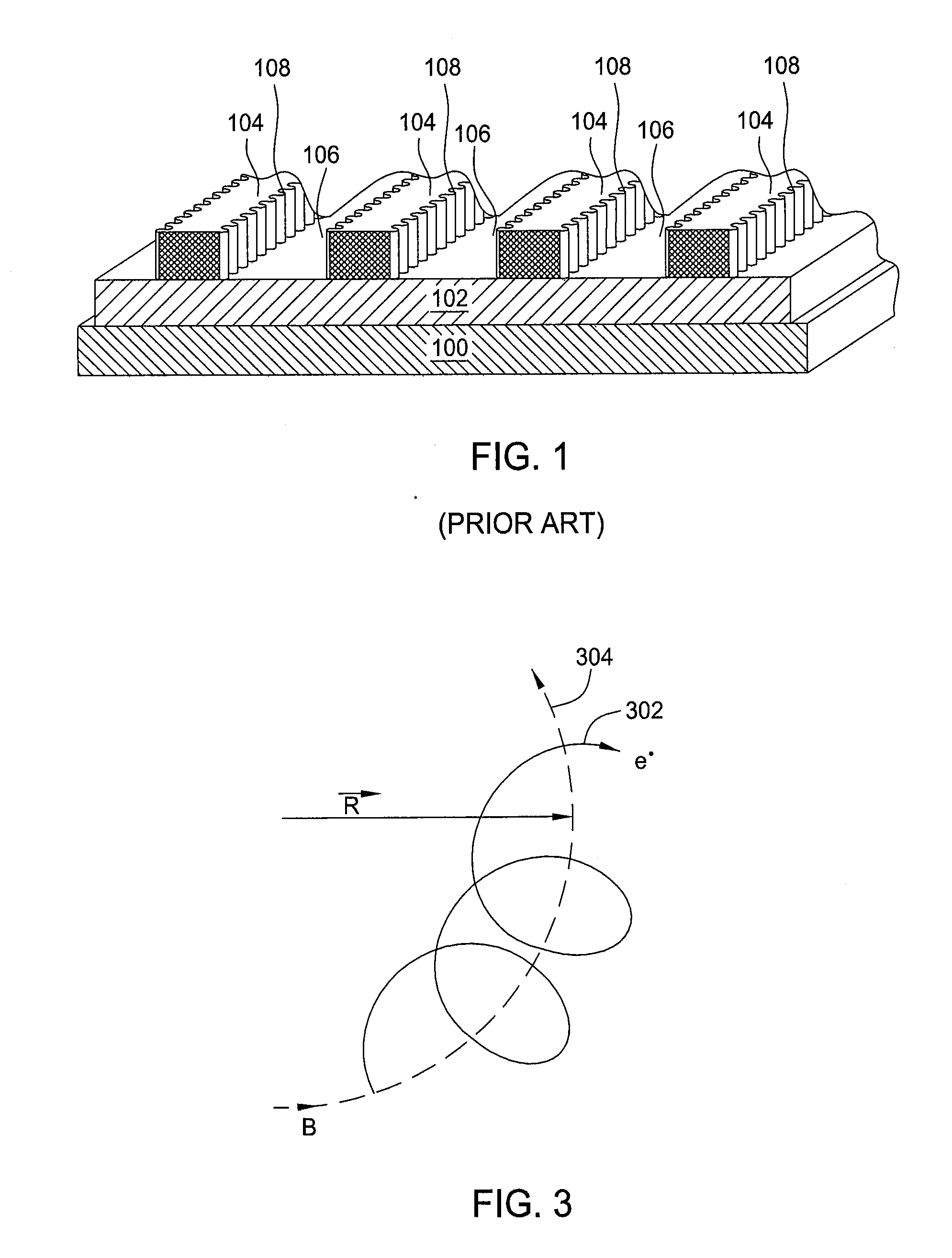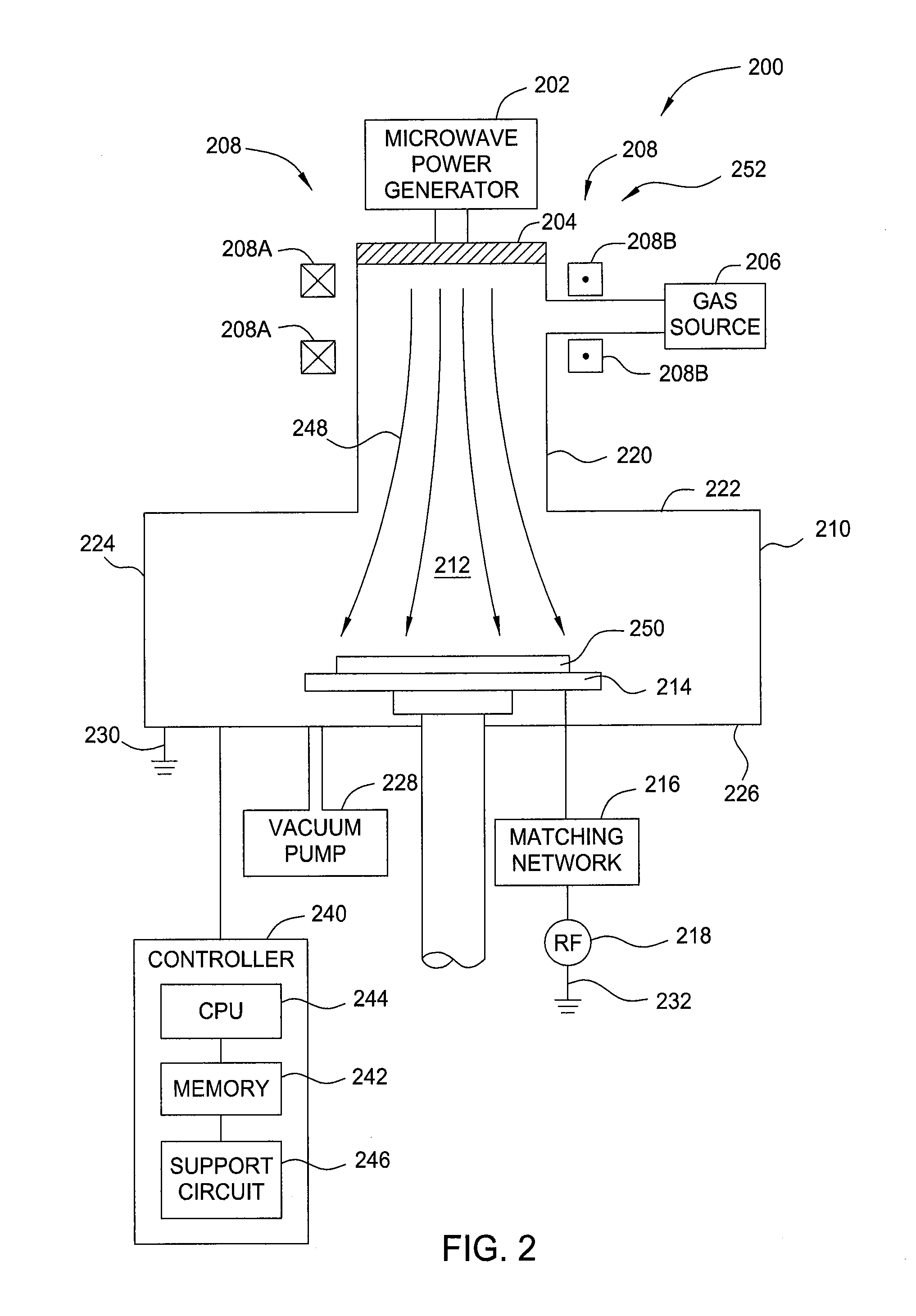Methods and apparatus for controlling photoresist line width roughness
a technology of photoresist and line width, applied in the direction of electrical equipment, decorative arts, electric discharge tubes, etc., can solve the problems of difficult to control the rough edges of the photoresist layer, the difficulty of lithography process to transfer even smaller features precisely and accurately onto the substrate, and the evolution of the integrated circuit into complex devices
- Summary
- Abstract
- Description
- Claims
- Application Information
AI Technical Summary
Benefits of technology
Problems solved by technology
Method used
Image
Examples
Embodiment Construction
[0021]Embodiments of the present invention include methods and apparatus for controlling line width roughness (LWR) of a photoresist layer disposed on a substrate. The line width roughness (LWR) of a photoresist layer may be controlled by performing an electron cyclotron resonance (ECR) plasma process on a photoresist layer after an exposure / development process. The electron cyclotron resonance (ECR) plasma process is performed to provide a chemical and electron grinding process in a nanometer scale to smooth the edge of the photoresist layer pattern, thereby providing a smooth pattern edge of the photoresist layer with minimum pattern edge roughness for the subsequent etching process.
[0022]FIG. 2 depicts a schematic, cross-sectional diagram of one embodiment of a electron cyclotron resonance (ECR) plasma reactor 200 suitable for performing an electron cyclotron resonance (ECR) plasma process according to the present invention. One such etch reactor suitable for performing the inven...
PUM
| Property | Measurement | Unit |
|---|---|---|
| Width | aaaaa | aaaaa |
| Surface roughness | aaaaa | aaaaa |
| Power | aaaaa | aaaaa |
Abstract
Description
Claims
Application Information
 Login to View More
Login to View More - R&D
- Intellectual Property
- Life Sciences
- Materials
- Tech Scout
- Unparalleled Data Quality
- Higher Quality Content
- 60% Fewer Hallucinations
Browse by: Latest US Patents, China's latest patents, Technical Efficacy Thesaurus, Application Domain, Technology Topic, Popular Technical Reports.
© 2025 PatSnap. All rights reserved.Legal|Privacy policy|Modern Slavery Act Transparency Statement|Sitemap|About US| Contact US: help@patsnap.com



